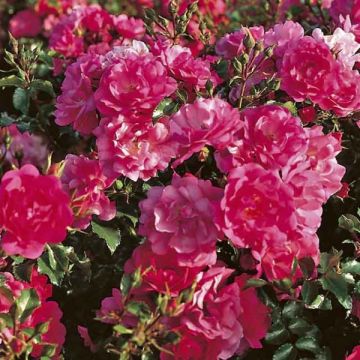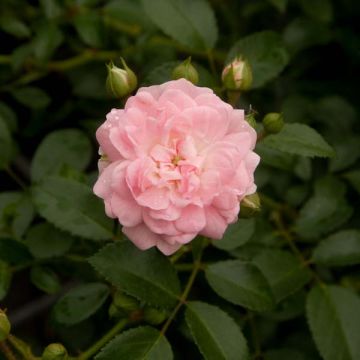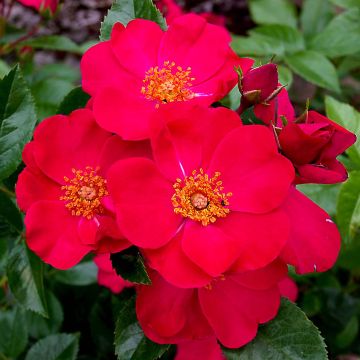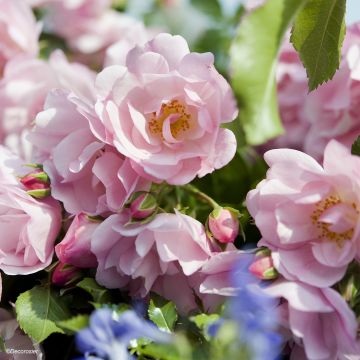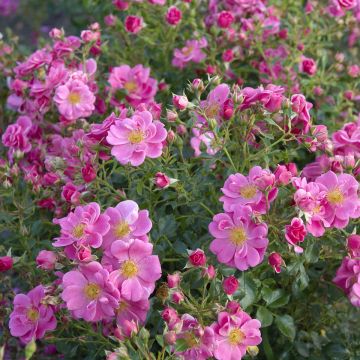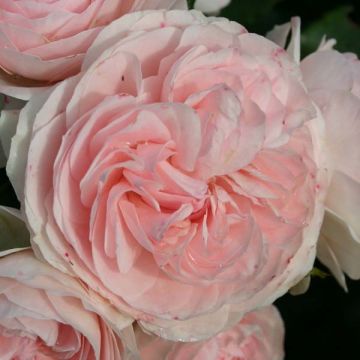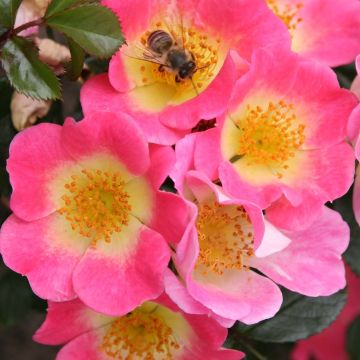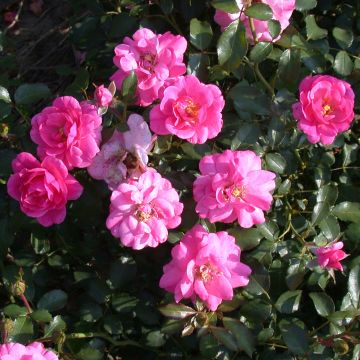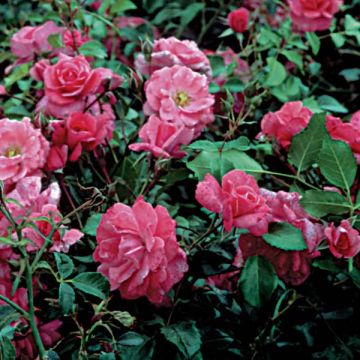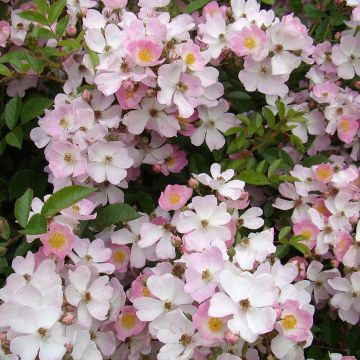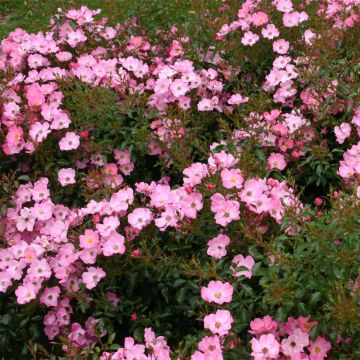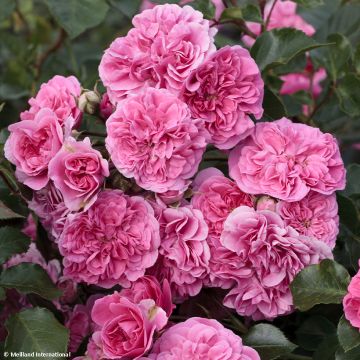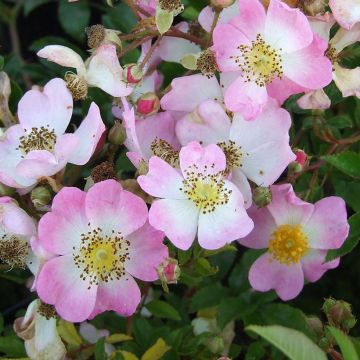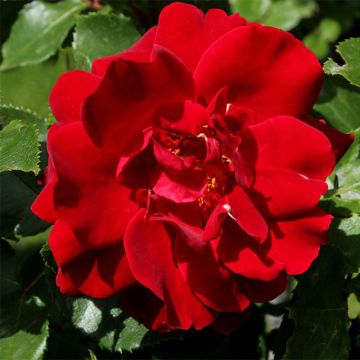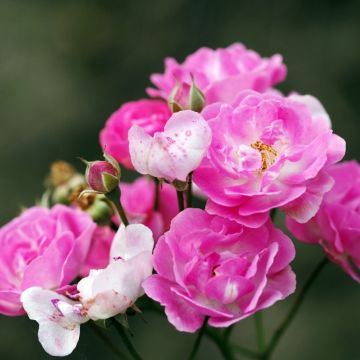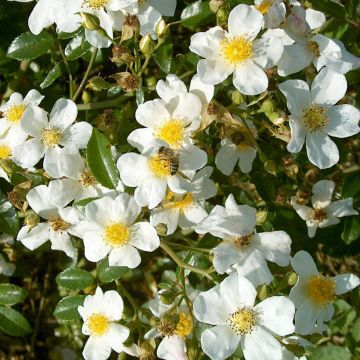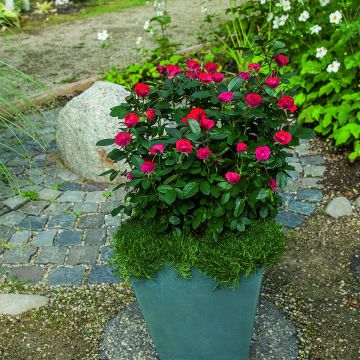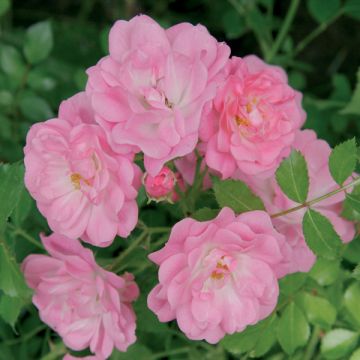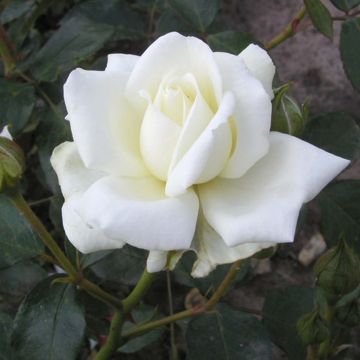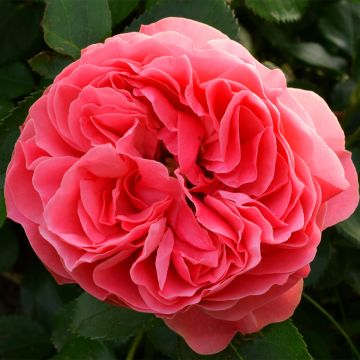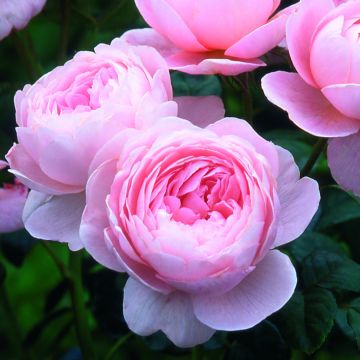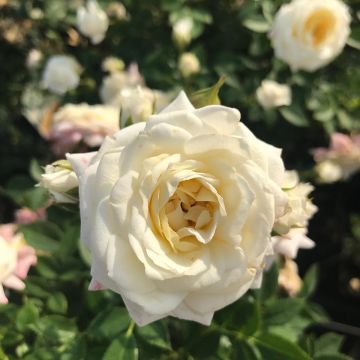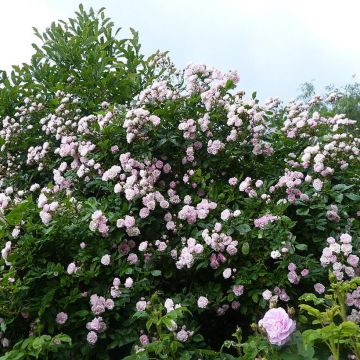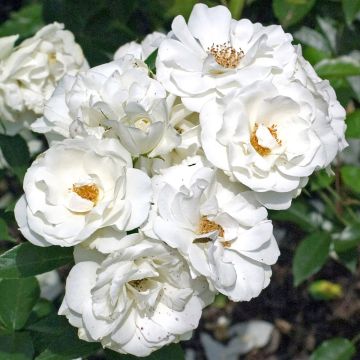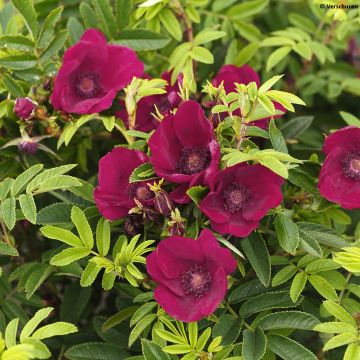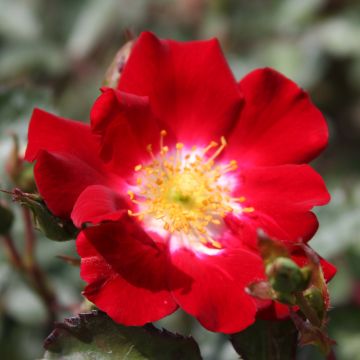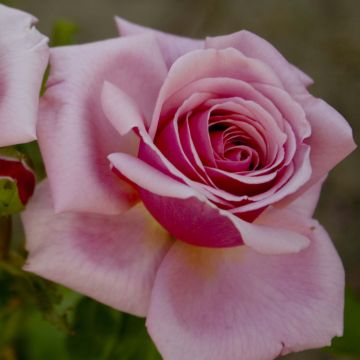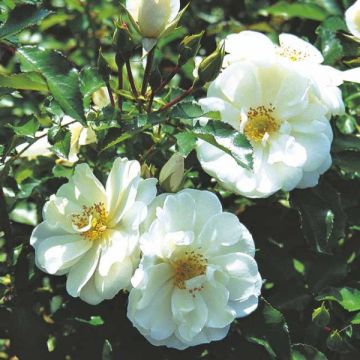Shipping country and language
Your country of residence may be:
Your country of residence is:
For a better user experience on our website, you can select:
Your shipping country:
Andorra
Austria
Belgium
Bulgaria
Canada
Chile
Croatia
Cyprus
Czechia
Denmark
Estonia
Finland
France
Germany
Greece
Hungary
Iceland
Ireland
Italy
Latvia
Lithuania
Luxembourg
Malta
Monaco
Netherlands
Poland
Portugal
Romania
Slovakia
Slovenia
Spain
Sweden
Switzerland
United Kingdom
We only deliver seed and bulb products to your country. If you add other products to your basket, they cannot be shipped.
Language:
French
German
Spanish
English
My Account
Hello
My wish lists
Plantfit
Log in / Register
Existing customer?
New customer?
Create an account to track your orders, access our customer service and, if you wish, make the most of our upcoming offers.
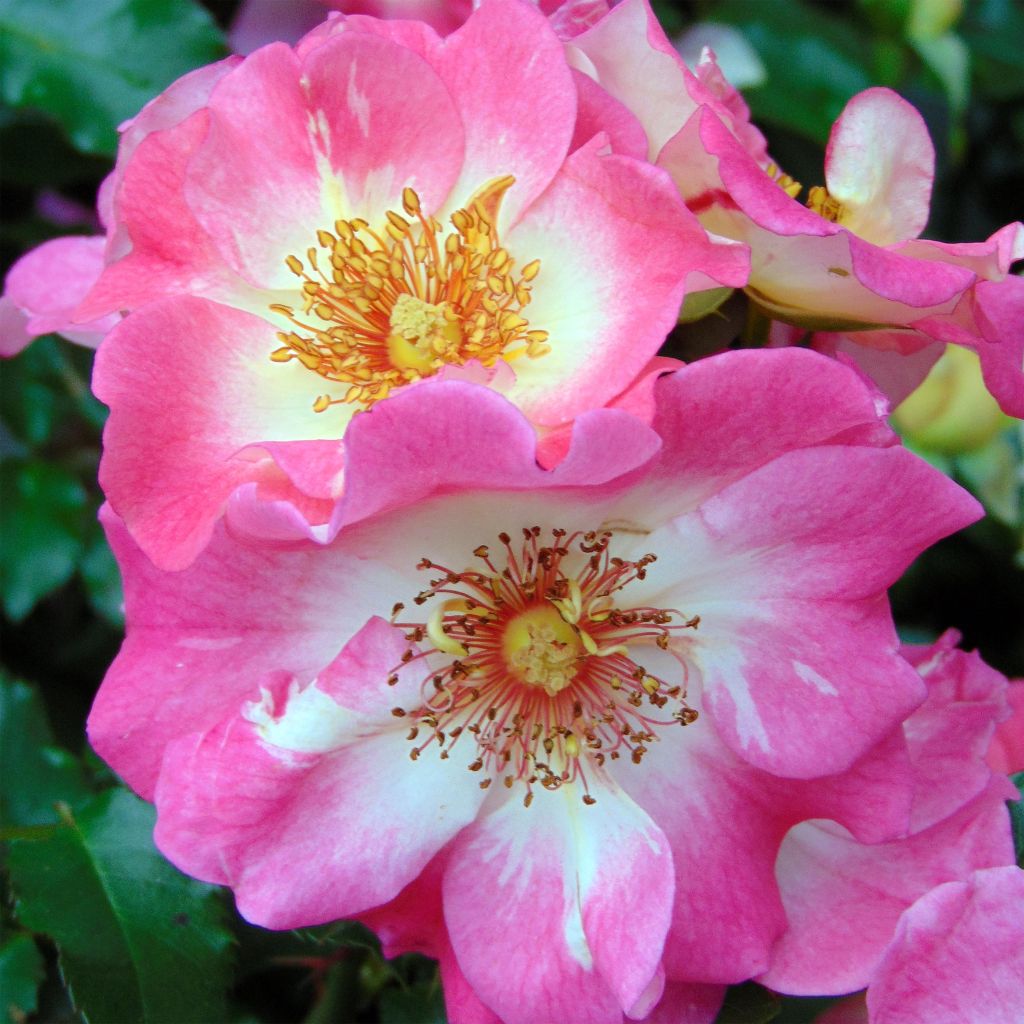

Rosa Dolomiti - ground cover rose
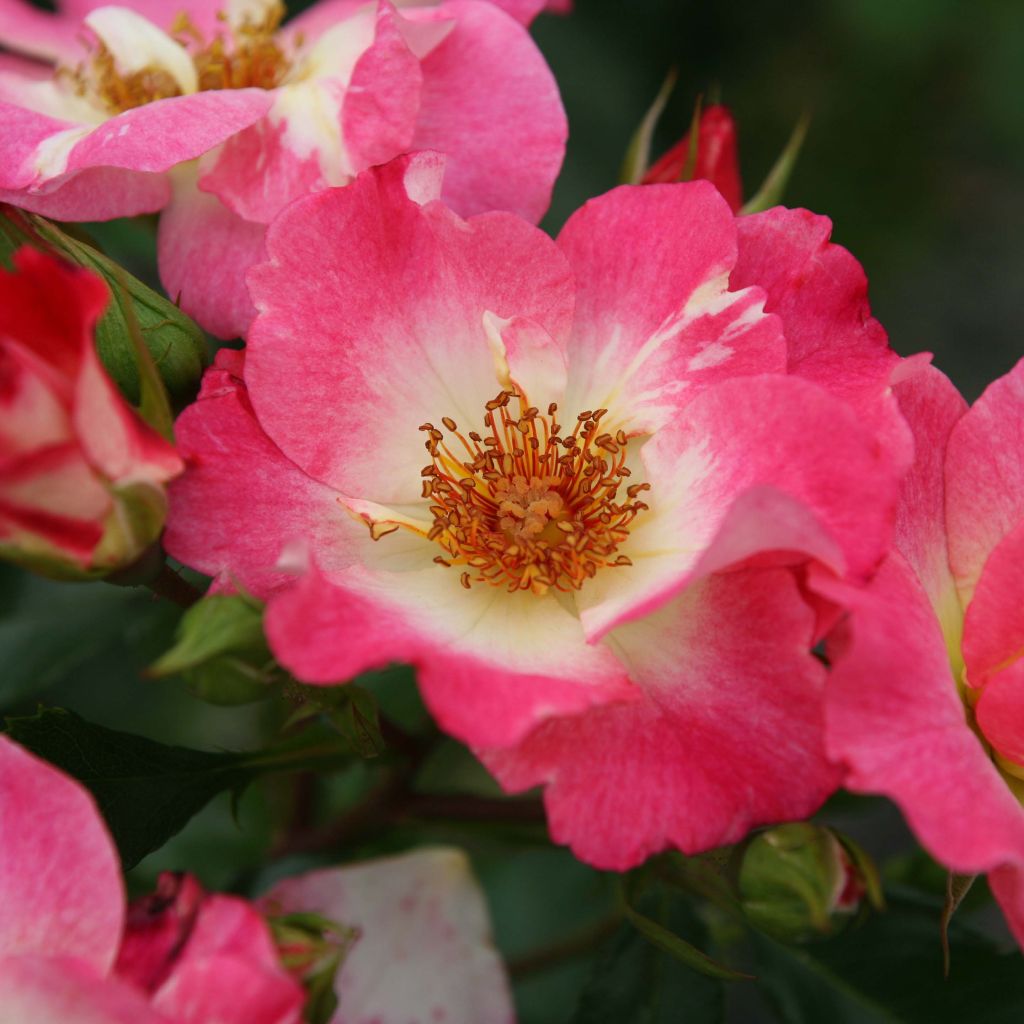

Rosa Dolomiti - ground cover rose
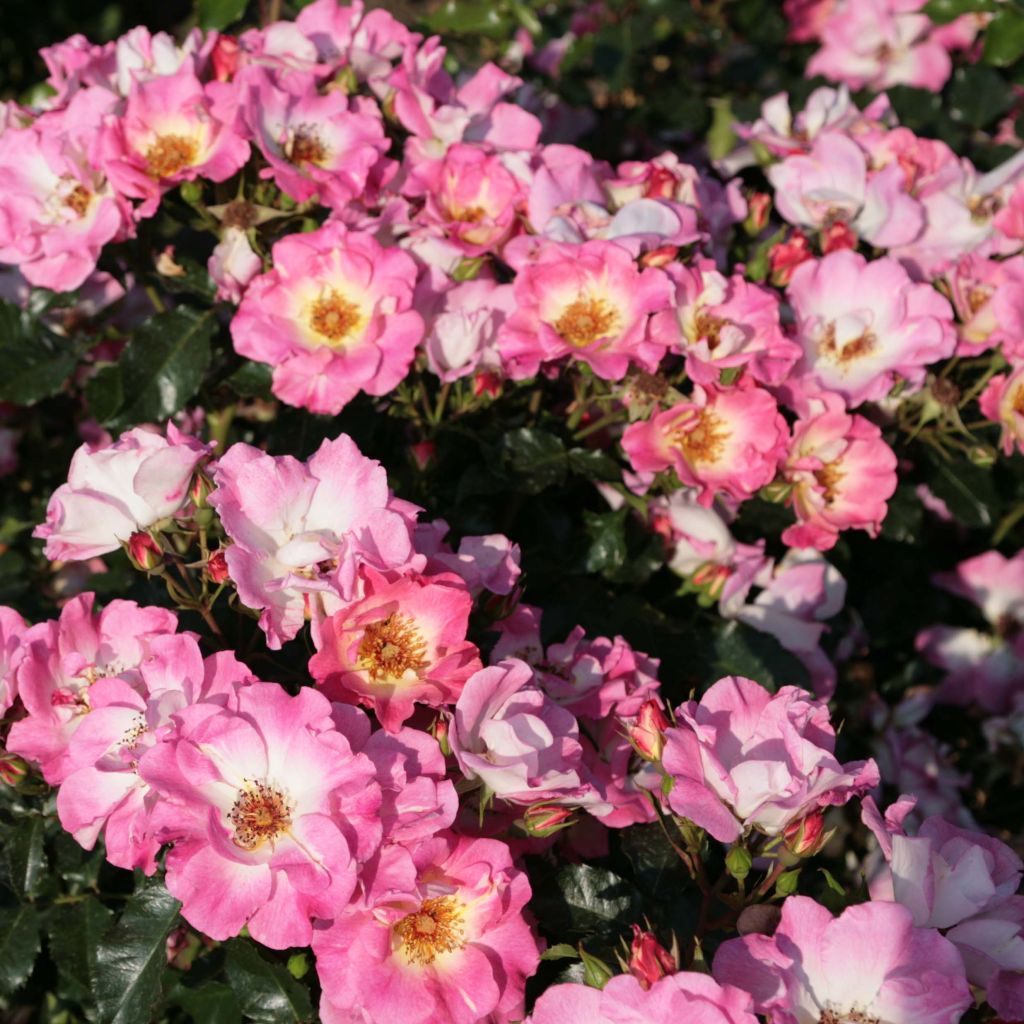

Rosa Dolomiti - ground cover rose
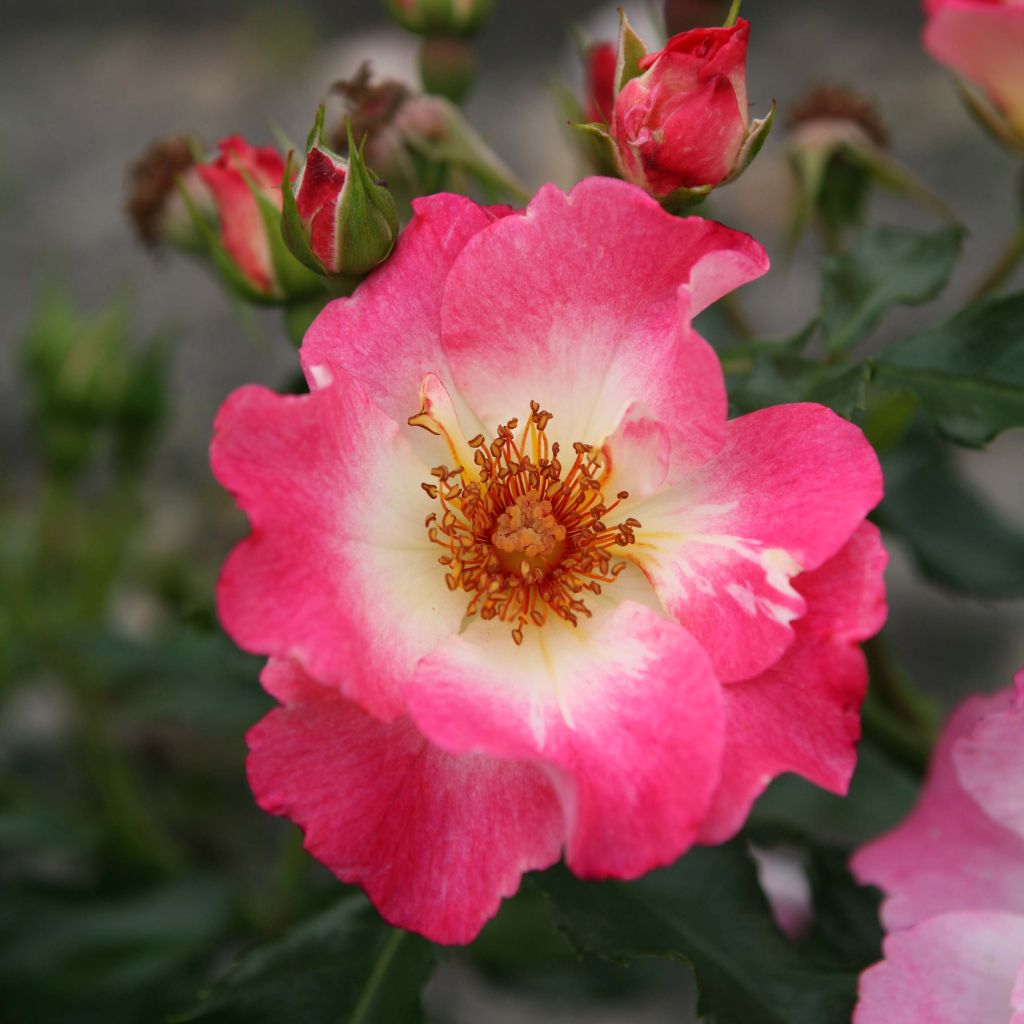

Rosa Dolomiti - ground cover rose
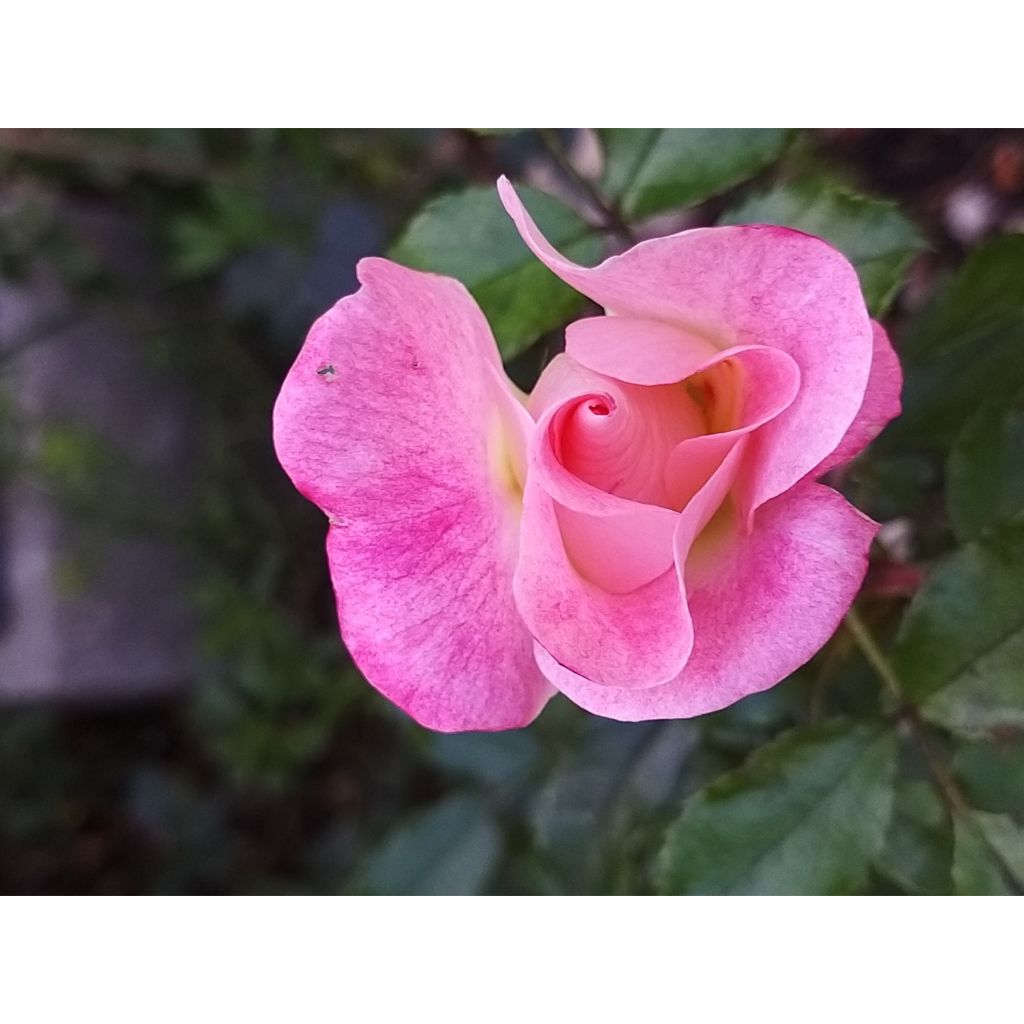

Rosa Dolomiti - ground cover rose
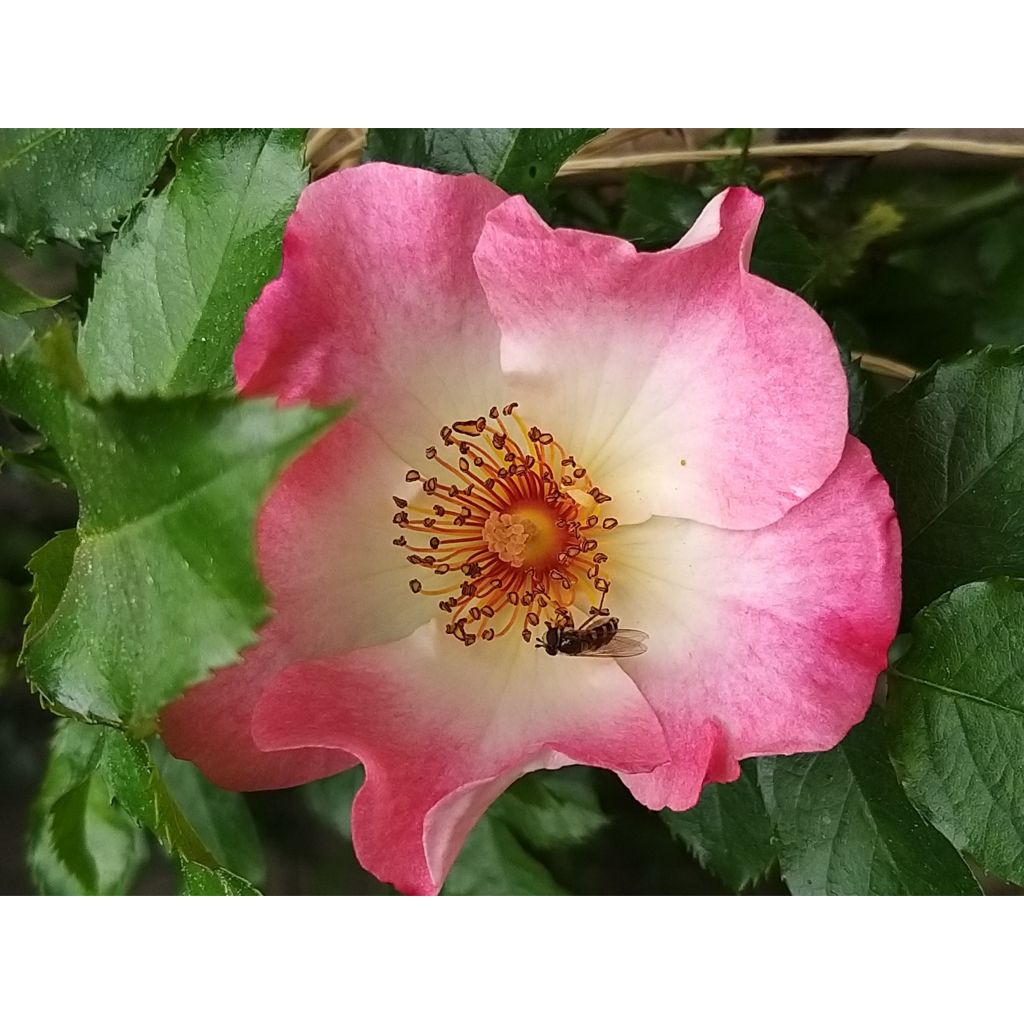

Rosa Dolomiti - ground cover rose
View more pictures
Hide images
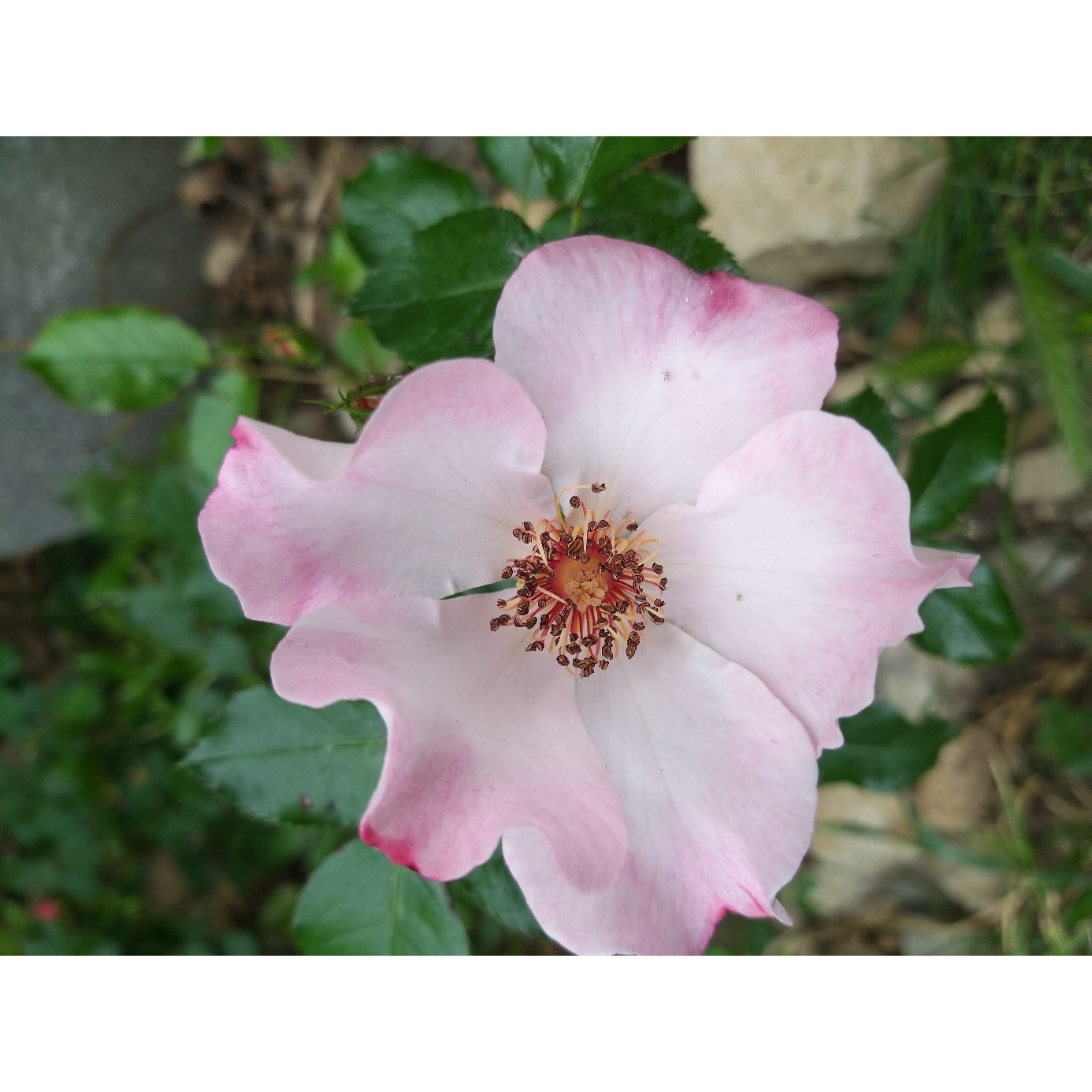
Thierry P.

Floraison de juin - image 1
Thierry P. • 84 FR
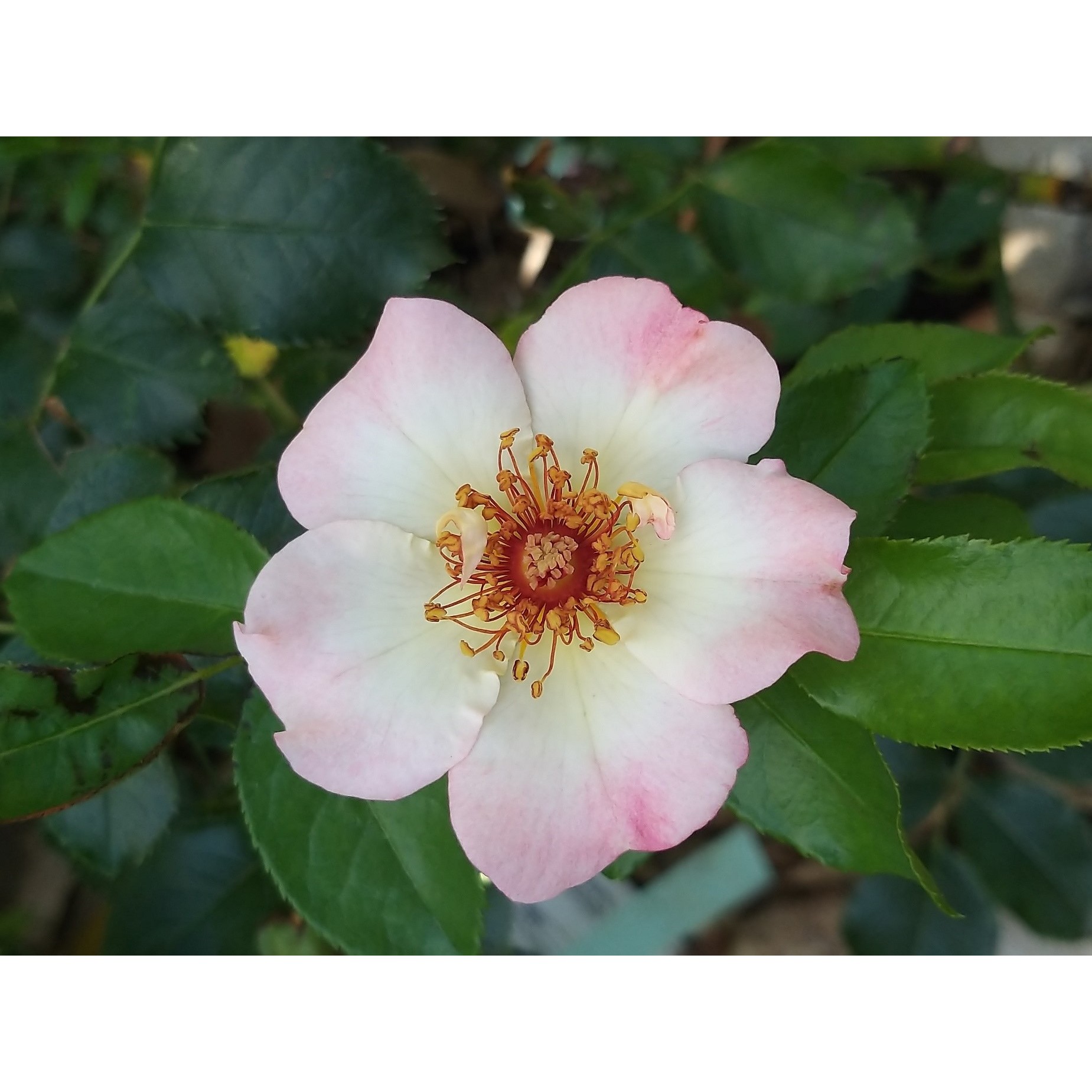
Thierry P.

Floraison de Juillet - image 4
Thierry P. • 84 FR
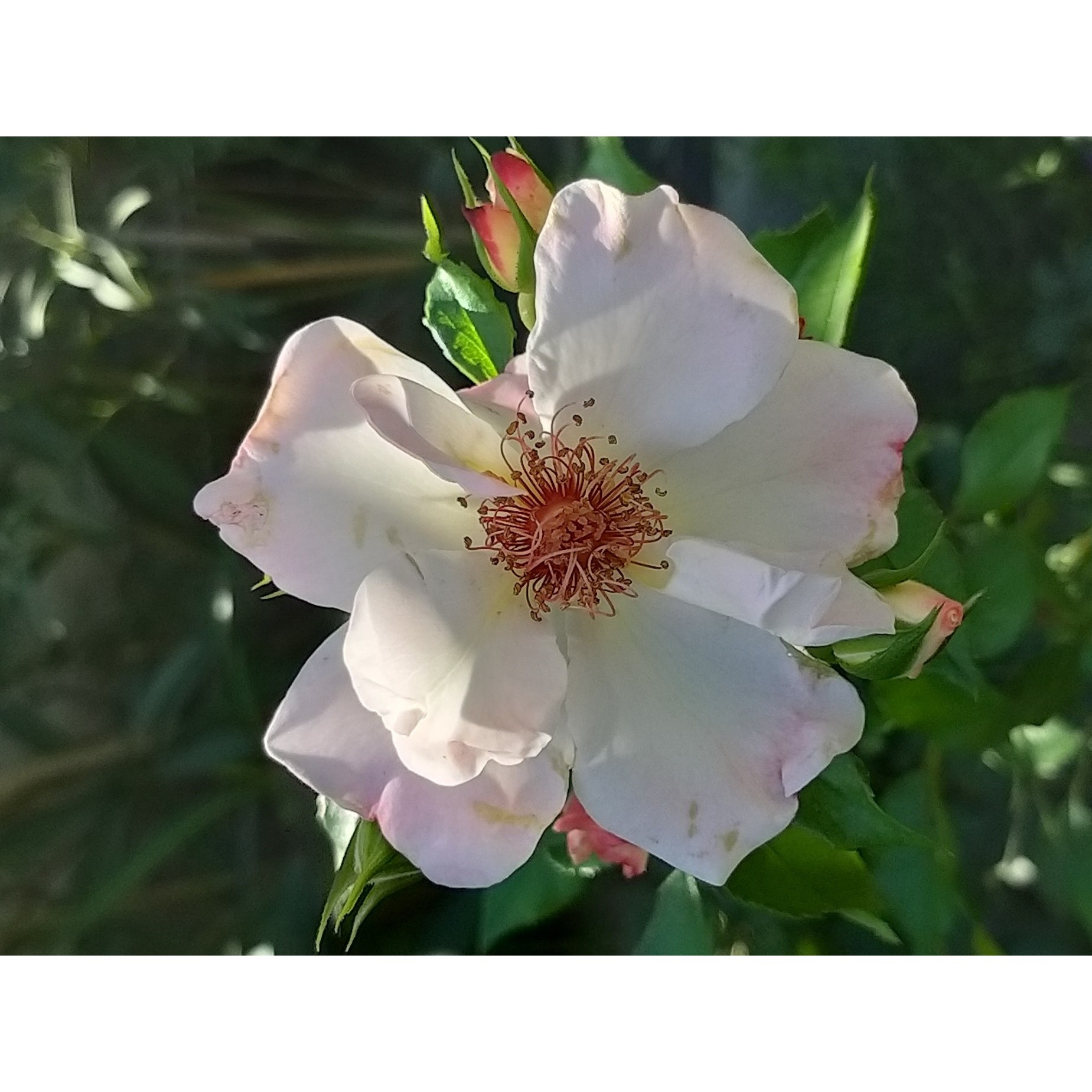
Thierry P.

Floraison de septembre - image 5
Thierry P. • 84 FR
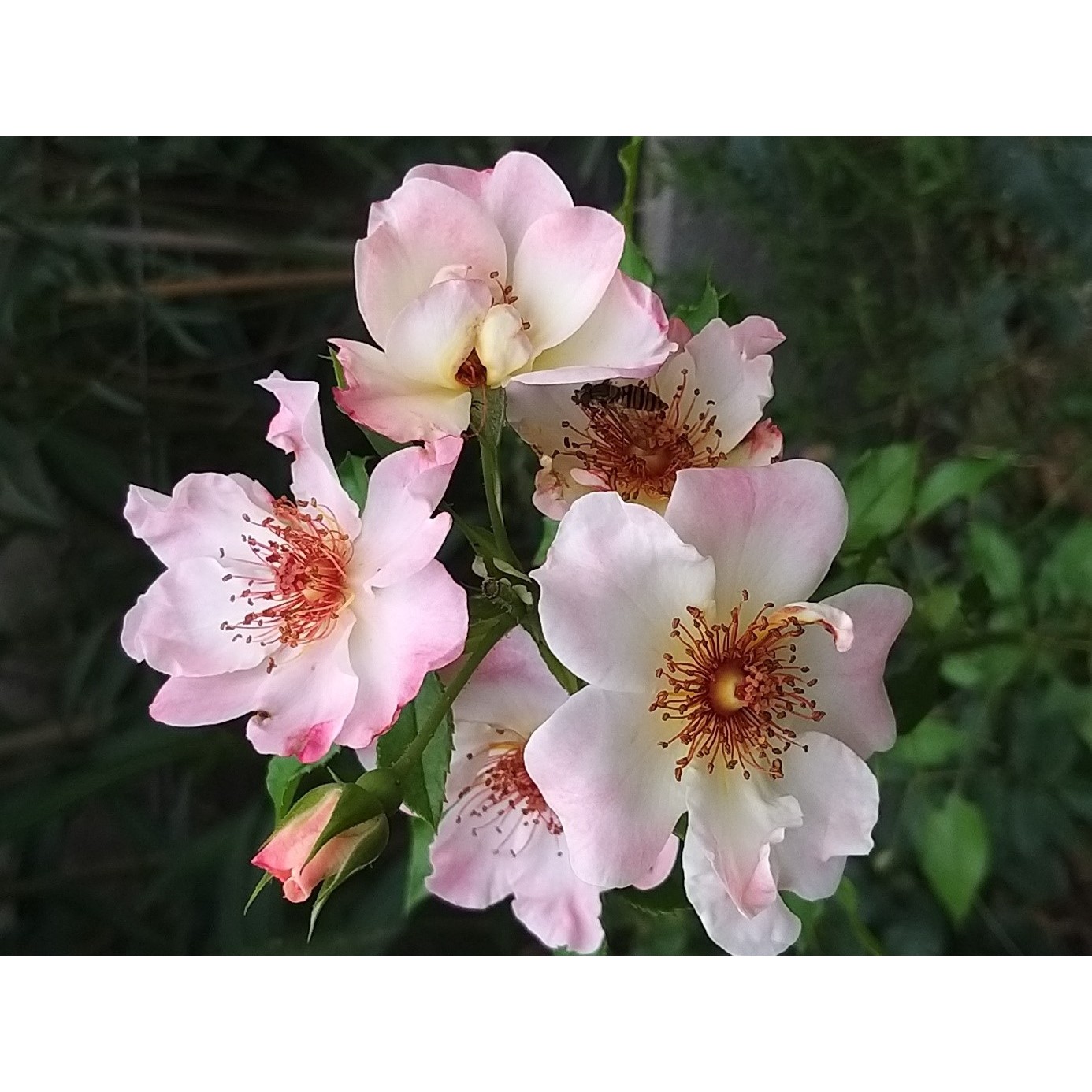
Thierry P.

Floraison de septembre - image 6 - Avec une butineuse.
Thierry P. • 84 FR
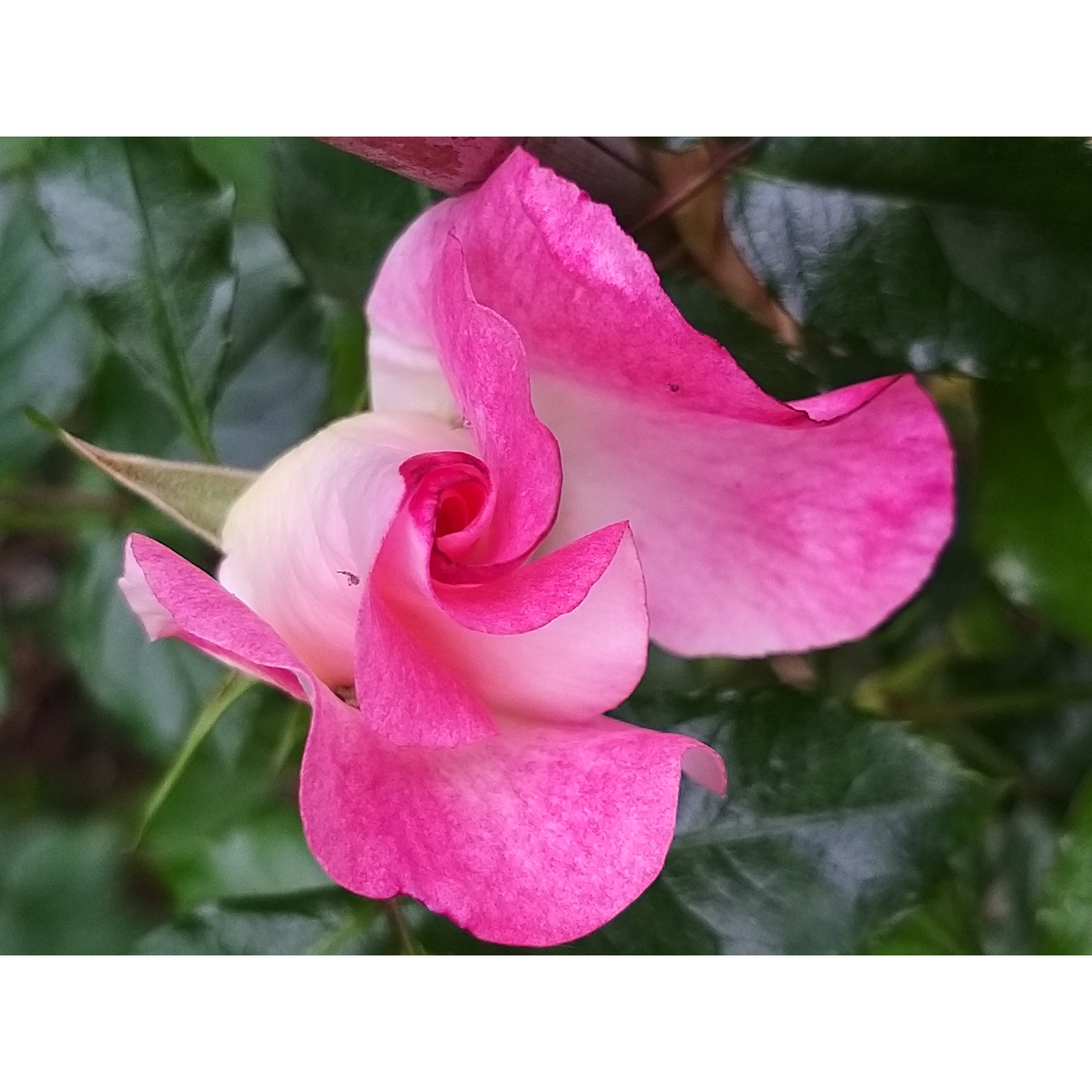
Thierry P.

Floraison d'avril - image 9
Thierry P. • 84 FR
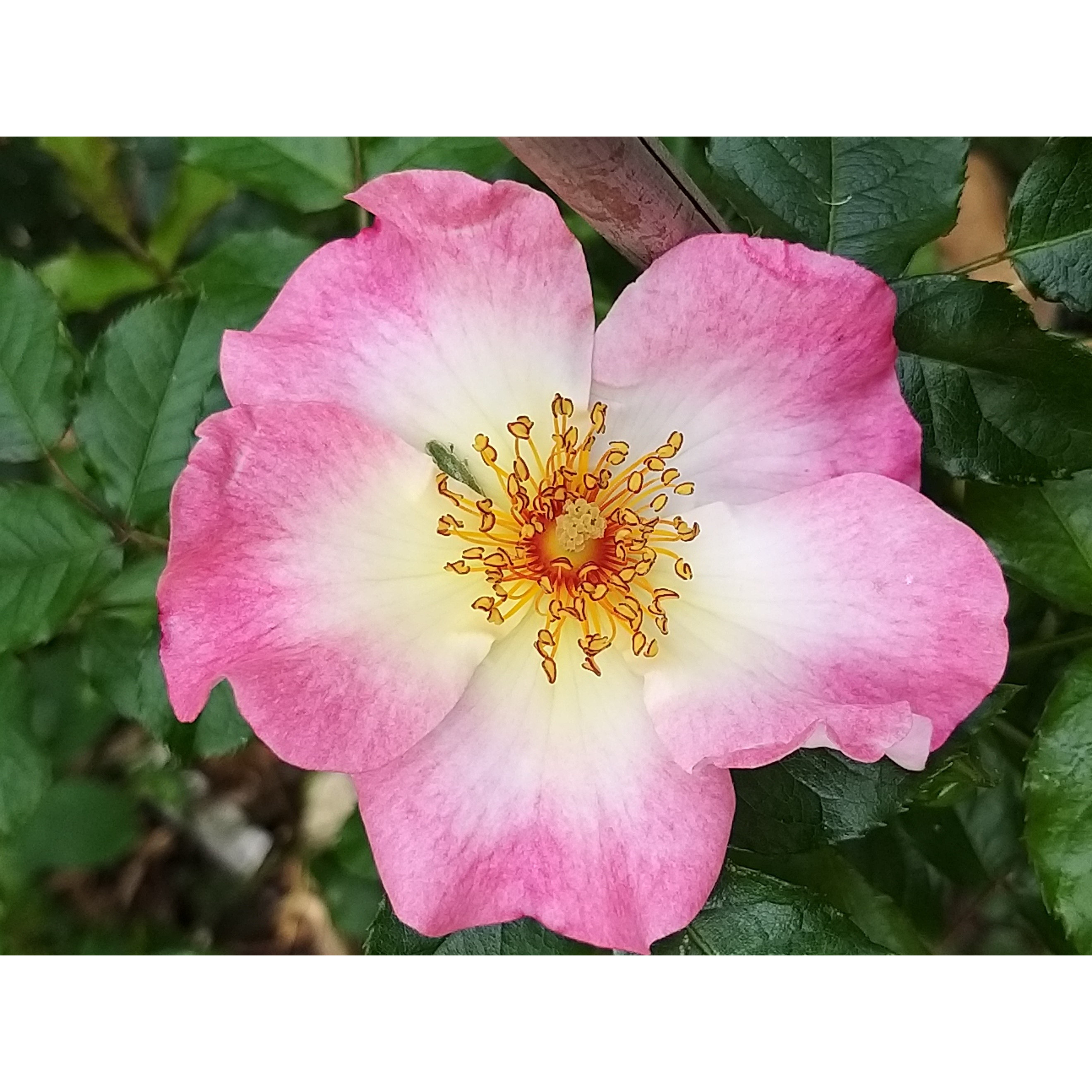
Thierry P.

Floraison d'avril - image 10
Thierry P. • 84 FR
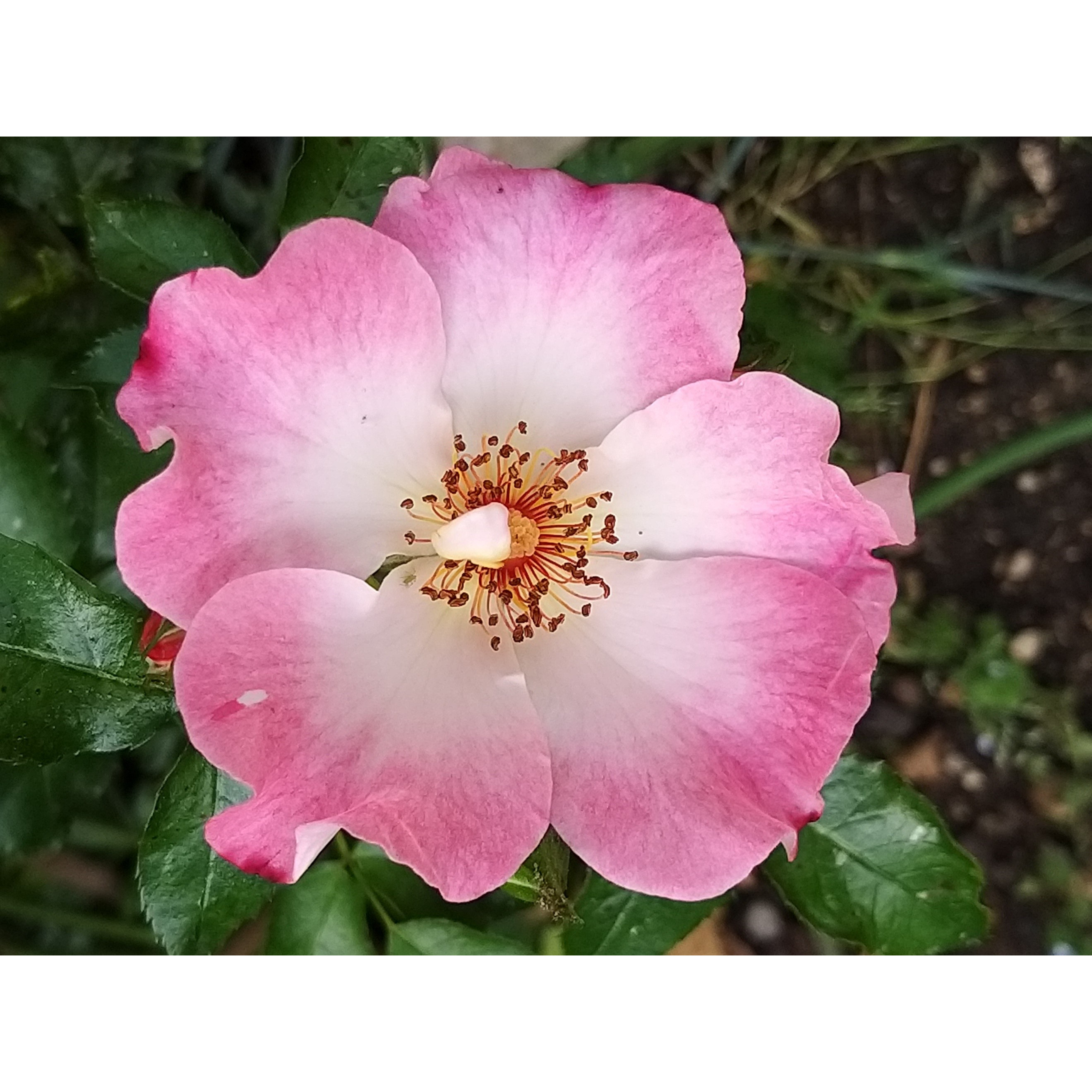
Thierry P.

Floraison de mai - image 13
Thierry P. • 84 FR
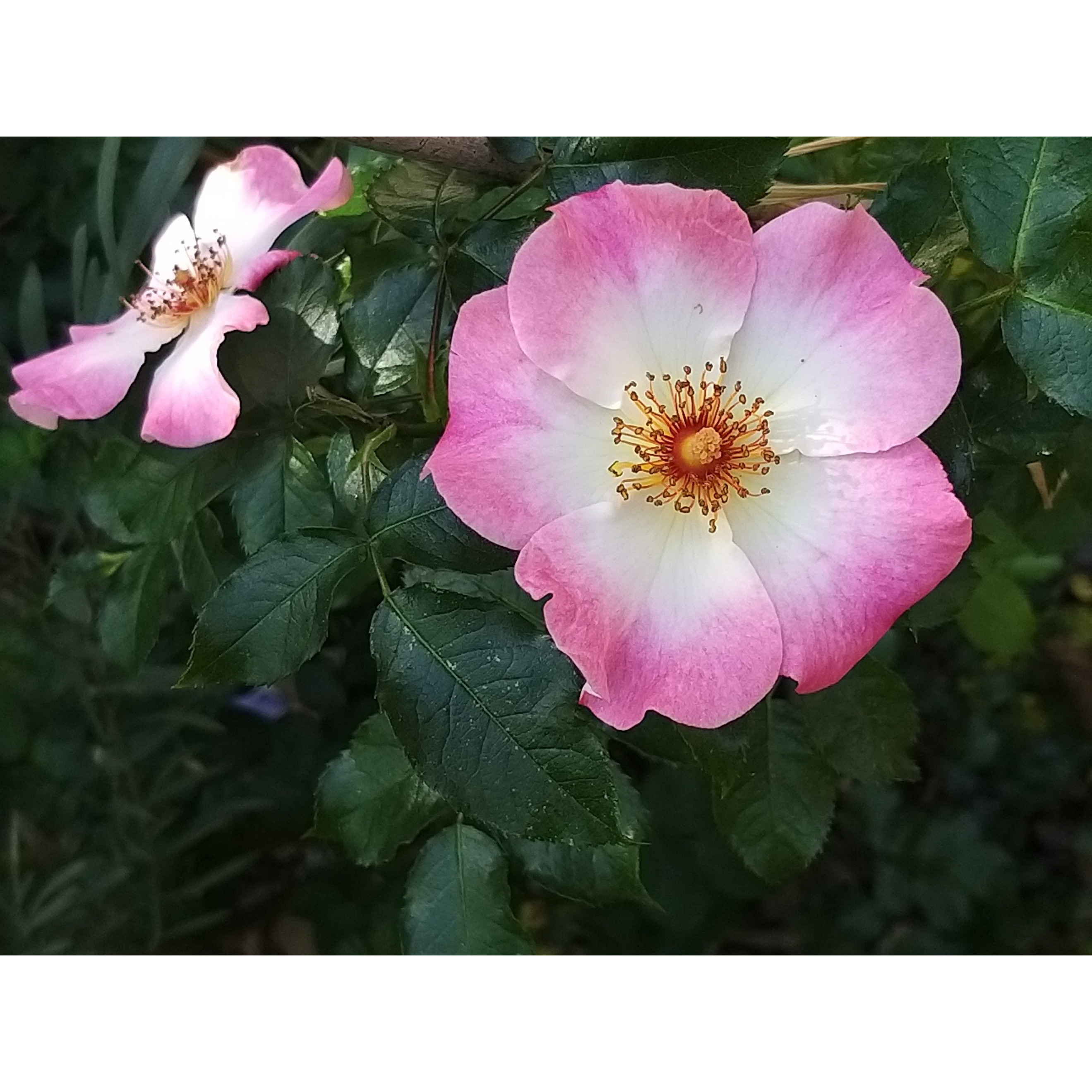
Thierry P.

Floraison de mai - image 15
Thierry P. • 84 FR
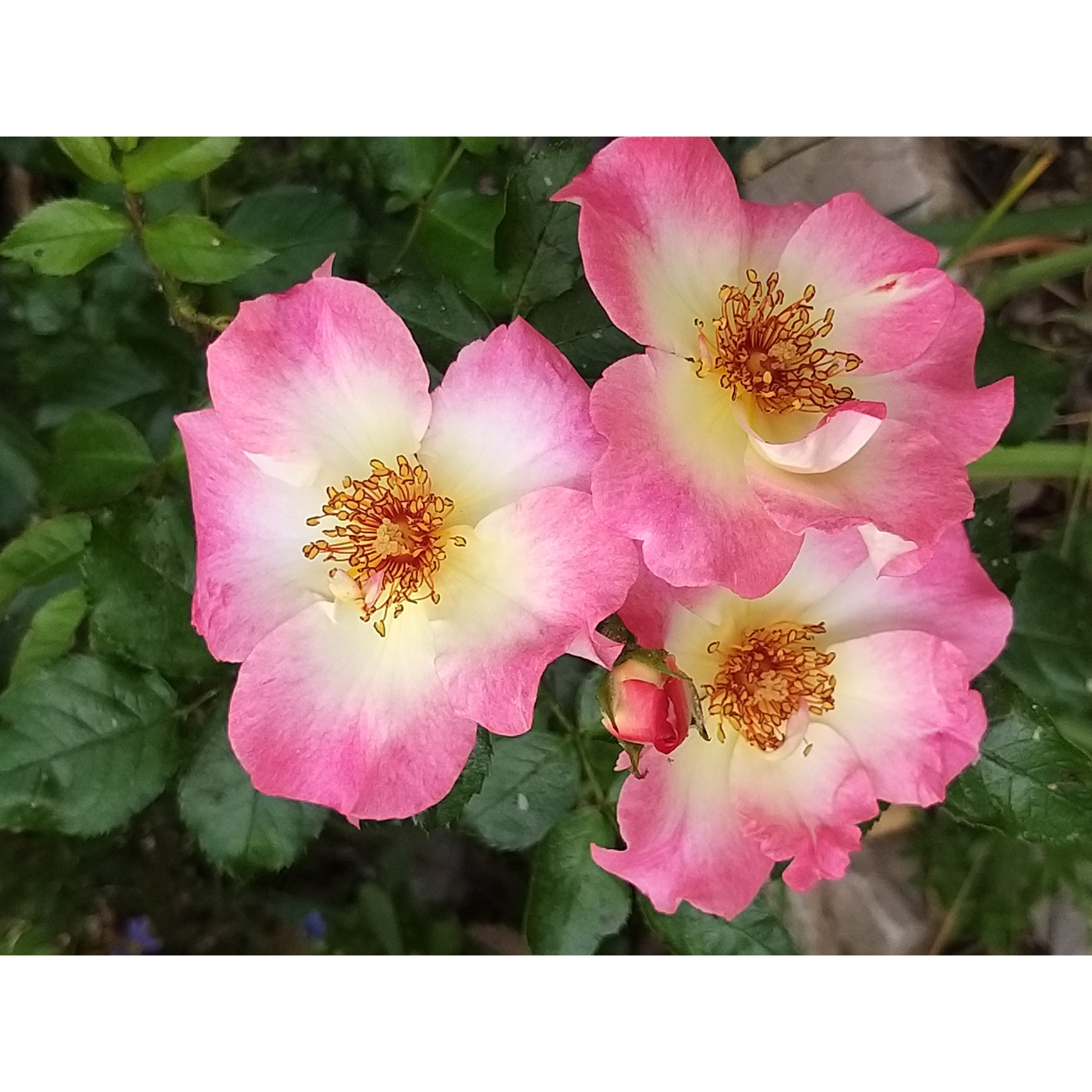
Thierry P.

Floraison de mai - image 18
Thierry P. • 84 FR
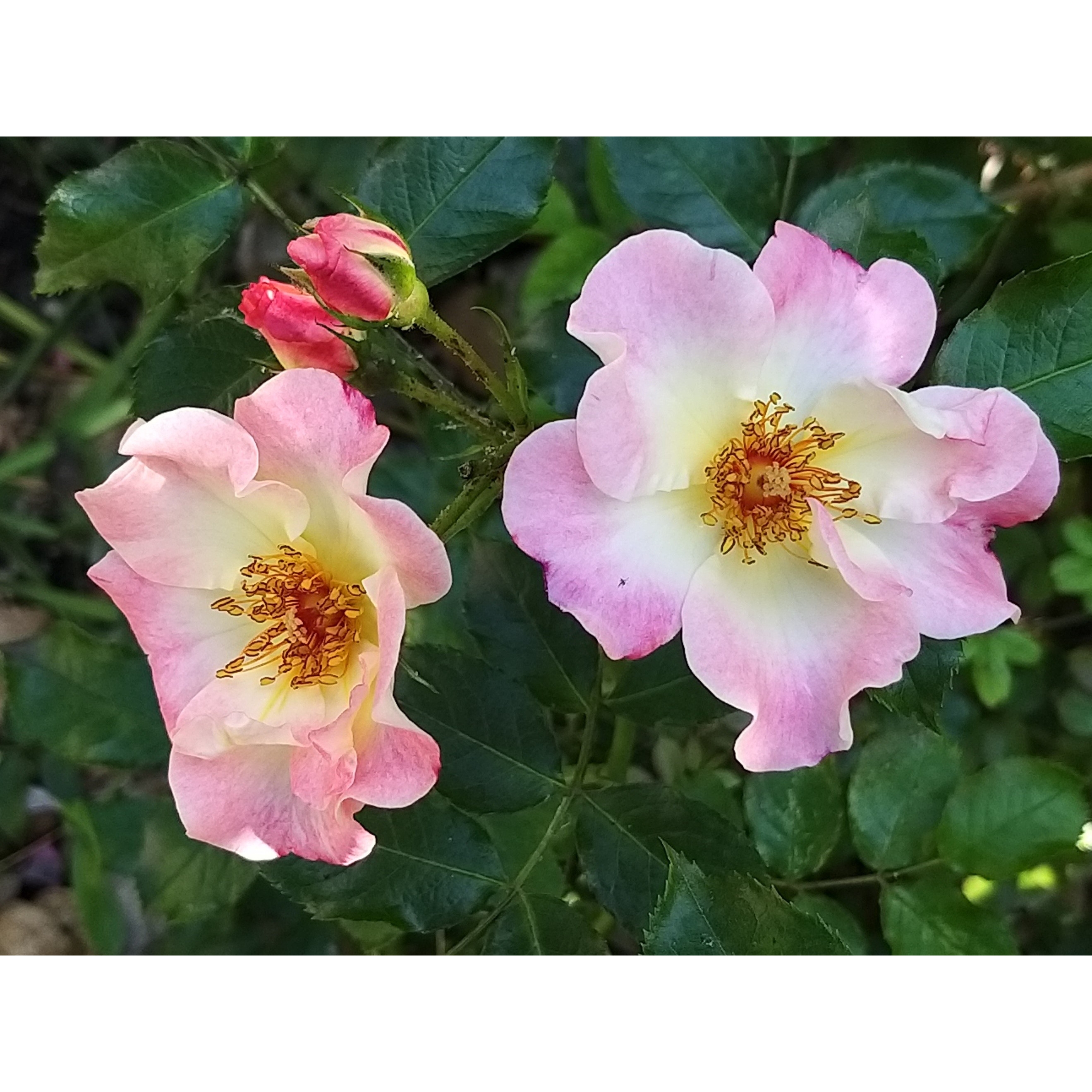
Thierry P.

Floraison de mai - image 20
Thierry P. • 84 FR
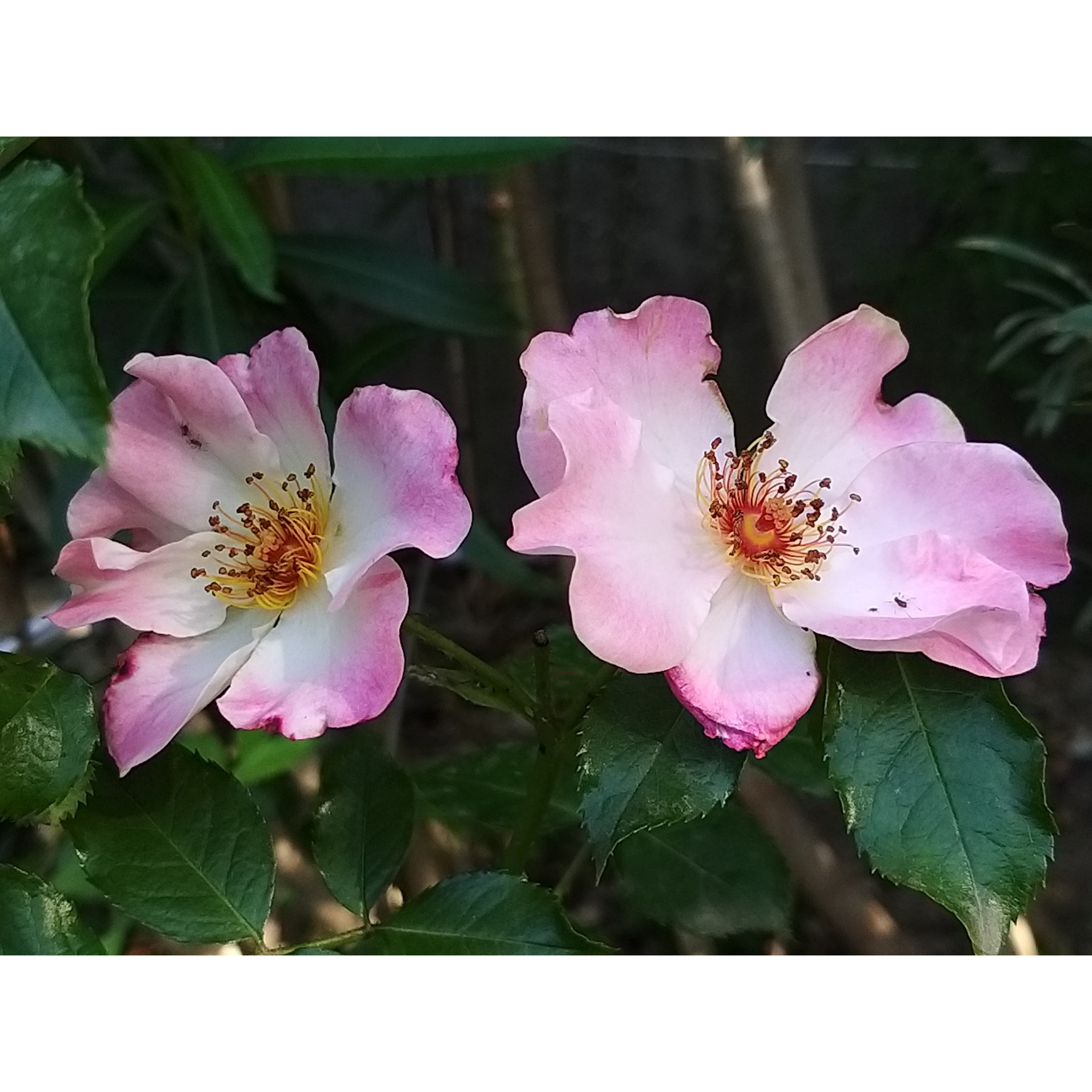
Thierry P.

Floraison de mai - image 22
Thierry P. • 84 FR
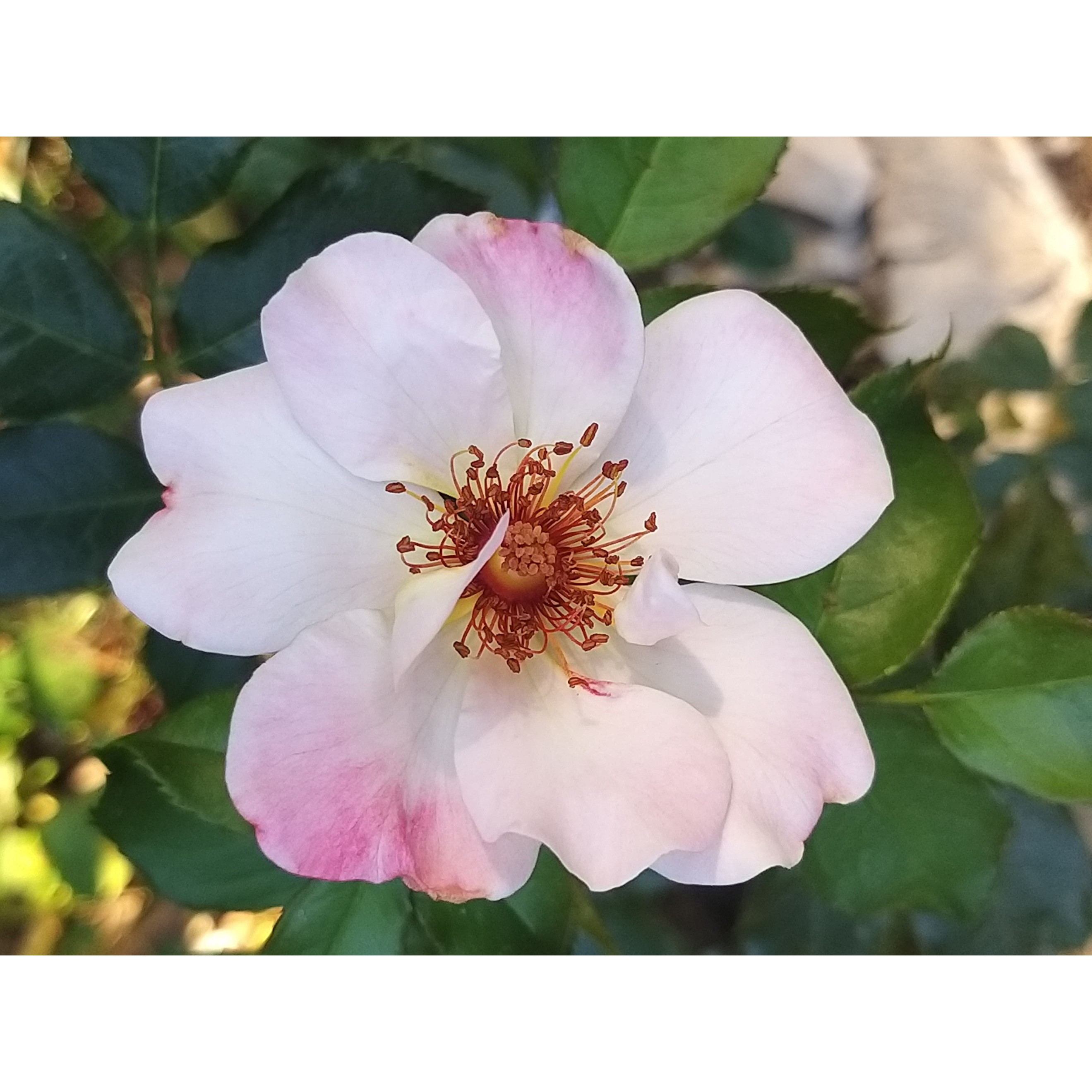
Thierry P.

Floraison de juillet - image 23
Thierry P. • 84 FR
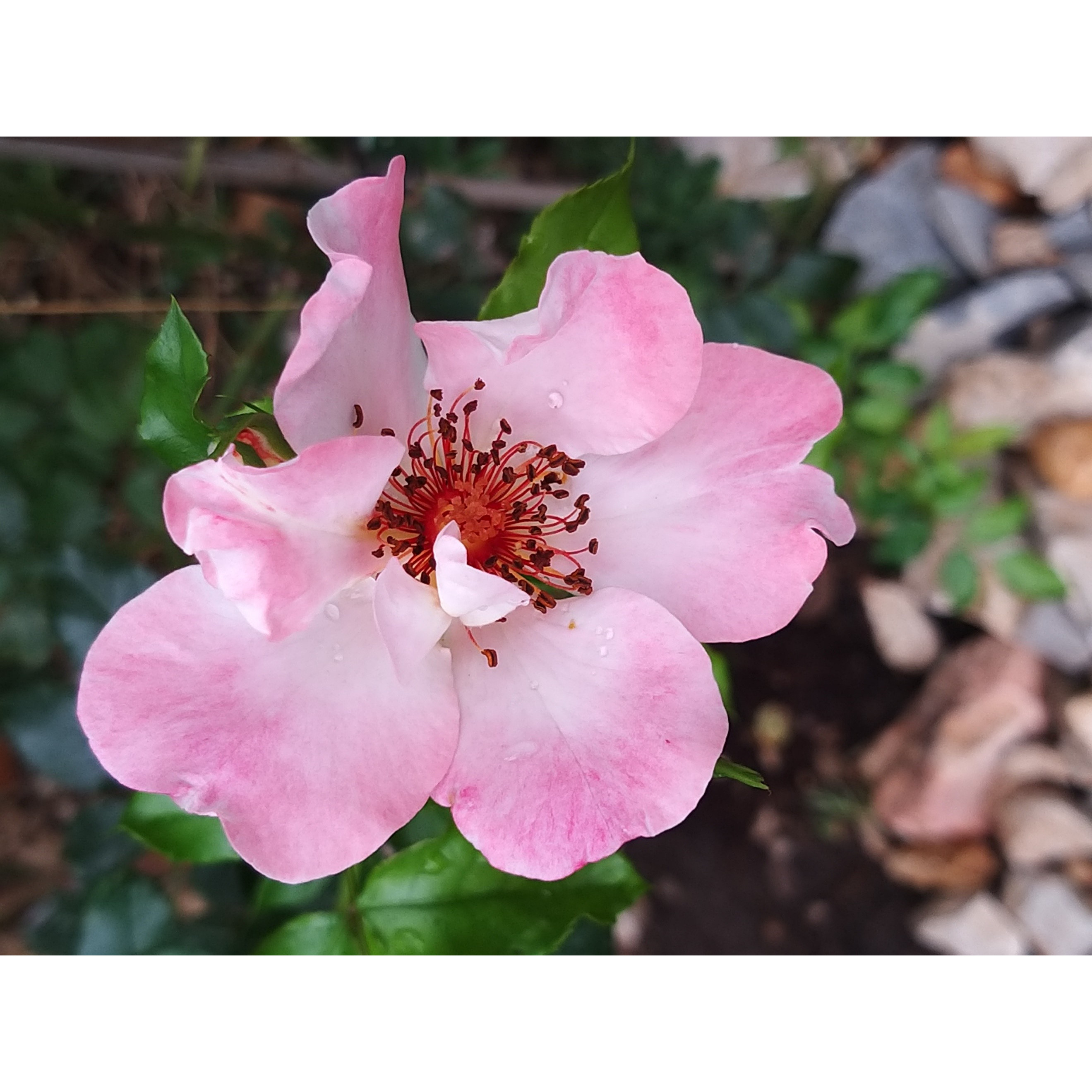
Thierry P.

Floraison de septembre - image 24
Thierry P. • 84 FR
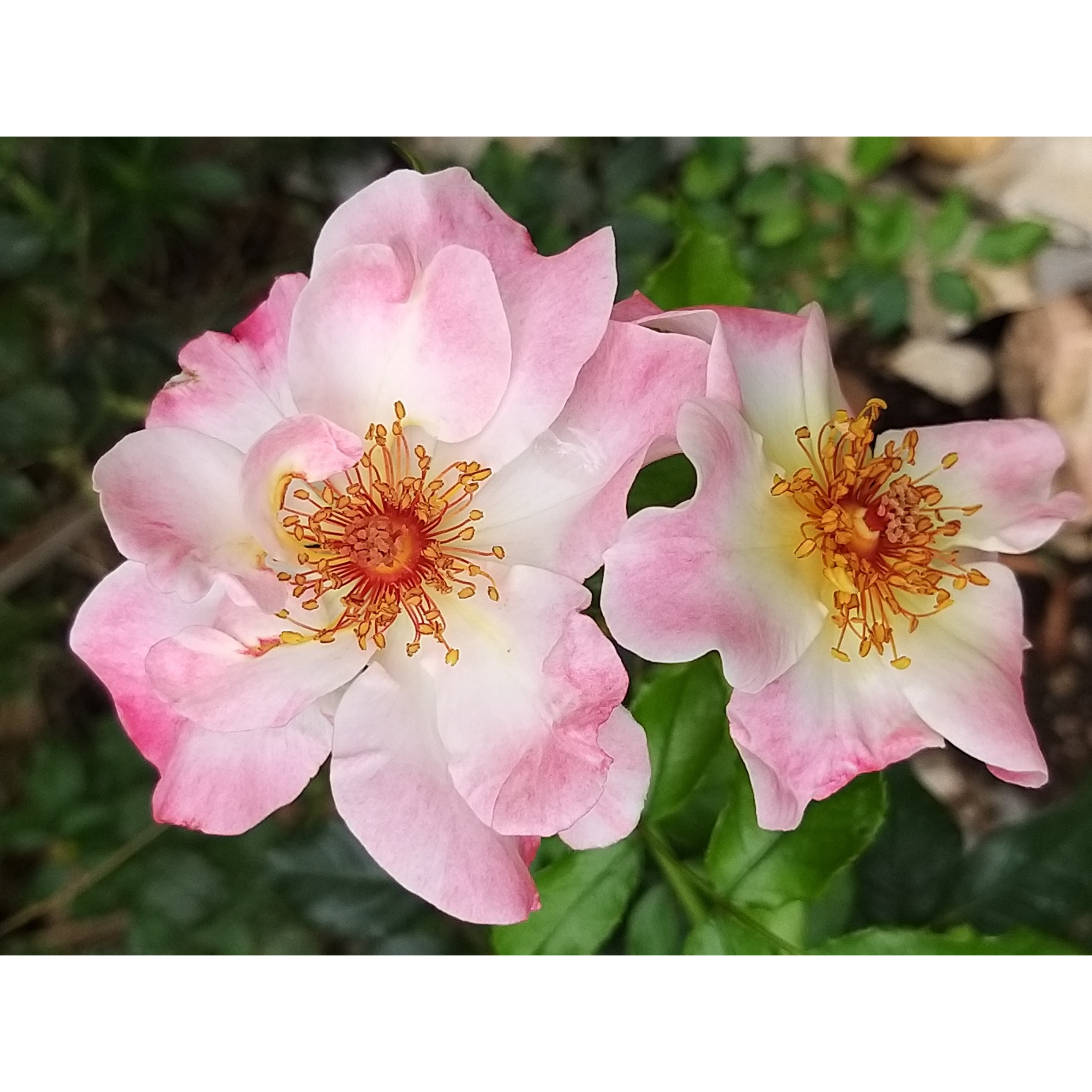
Thierry P.

Floraison de septembre - image 26
Thierry P. • 84 FR
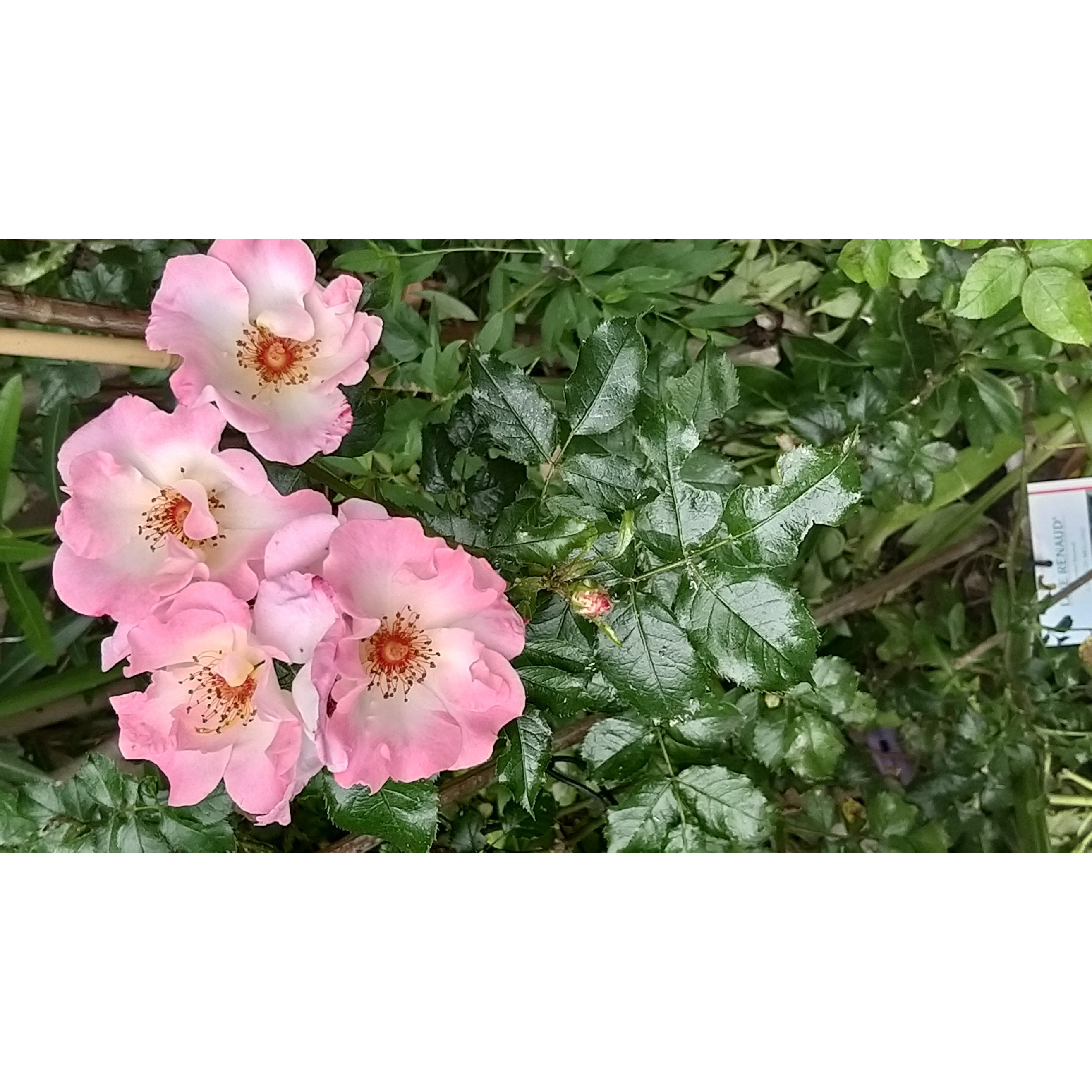
Thierry P.

Floraison de juin - image 31
Thierry P. • 84 FR
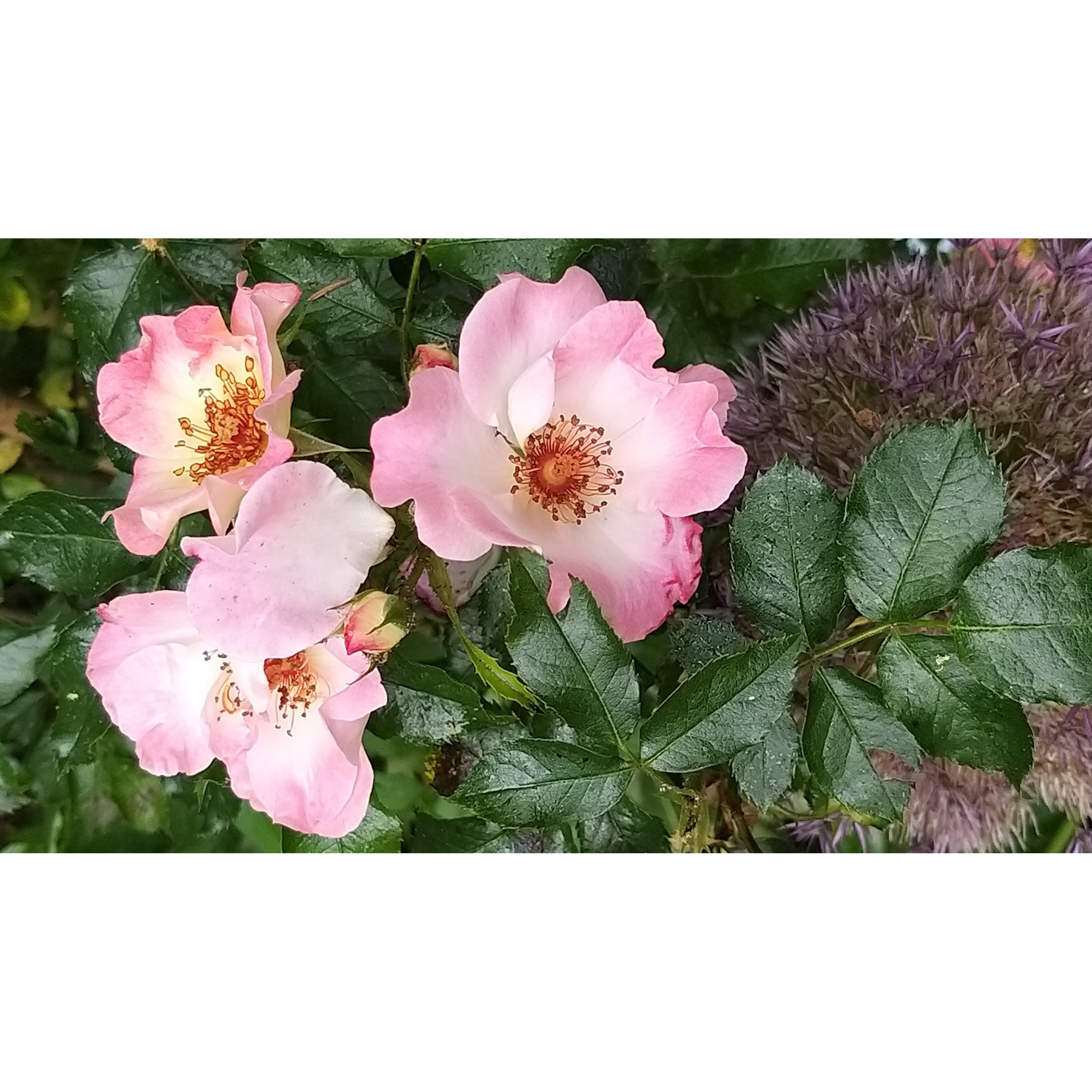
Thierry P.

Floraison de juin - image 32
Thierry P. • 84 FR
Rosa Dolomiti - ground cover rose
Rosa x polyantha Dolomiti® Korrahibe
ground cover rose
Thanks to Ludivine (order preparation and quality control), the young rose plant received appears healthy. I will wait for spring to confirm its successful establishment. This is the opinion of an amateur who has successfully planted over 390 different varieties of roses in his garden (including 80 AUSTIN).
Thierry, 25/12/2018
Why not try an alternative variety in stock?
View all →Order in the next for dispatch today!
Dispatch by letter from €3.90.
Delivery charge from €5.90 Oversize package delivery charge from €6.90.
More information
This item is not available in your country.
Schedule delivery date,
and select date in basket
This plant carries a 24 months recovery warranty
More information
We guarantee the quality of our plants for a full growing cycle, and will replace at our expense any plant that fails to recover under normal climatic and planting conditions.
From €5.90 for pickup delivery and €6.90 for home delivery
Express home delivery from €8.90.
From €5.90 for pickup delivery and €6.90 for home delivery
Express home delivery from €8.90.

Does this plant fit my garden?
Set up your Plantfit profile →
Description
Rosa 'Dolomiti' is an excellent variety of ground cover shrub rose, appreciated for its disease resistance and its simple and bright, long and abundant flowering. This lovely upright and harmonious small bush is full of life and forms an adorable ground cover covered with clusters of pink and white wild roses, animated by a heart of golden stamens. They bloom almost continuously for 4 to 5 months on elegant, shiny dark green foliage, unaffected by diseases. This robust and hardy rose bush from the 'Sans contrainte' series requires little attention and care from the gardener, ideal for beginners. Simple, charming and generous, it works well in front of taller shrubs, in large borders along pathways...
The flowers of Rosa Dolomiti (Korrahibe)are gathered in terminal clusters like the polyantha rose, an old hybrid resulting from Rosa multiflora and Rosa chinensis. This excellent German variety has won several awards in international competitions, including the prestigious and highly selective ADR label for its perfect disease resistance among other criteria. It was introduced in 2011 by the German rose breeder Kordes.
This small, well-behaved shrub has a bushy and compact, taller-than-wide shape. It will reach about 60 cm (24in) high with a spread of 50 cm (20in) in a few years, or up to 1.50 m (5ft) high if allowed to grow freely without pruning. The single, 5 to 7 cm (2 to 3in) flowers, gathered in clusters of 5 to 6 units, are produced abundantly and continuously from June to October if the soil remains moist. In this variety, the flower buds are copper red and open into fairly bright pink corollas, becoming almost white at full bloom. They open widely to reveal a beautiful nest of golden stamens. After the flowers, numerous small red hips appear and remain decorative until winter. This very disease-resistant variety has elegant, dense and shiny dark green foliage and its stems are thorny.
Rosa 'Dolomiti' adapts to all soils that are not too dry and all climates, which allows it to be grown in many regions. It works wonders as a border plant, in a flower bed, in a pot on the terrace, or on a large slope where it will cover the ground. It can also be planted in groups of 3, arranged in a triangle on a lawn. Plant it en masse or in with pink ground cover roses (Maman Turbat, The Fairy) or white ones (Swany, Marie Pavie) to highlight the path of a pathway or a border of light or opulent shrubs and perennials. It can be grown with perennial geraniums (Geranium Blue Cloud, Anne Folkard, Nimbus, Orion), bellflowers (lactiflora, rapunculoides), catmints, foxgloves or perennial salvias. It blends perfectly with pink or white flowering shrub roses in a romantic garden.
Rosa Dolomiti - ground cover rose in pictures
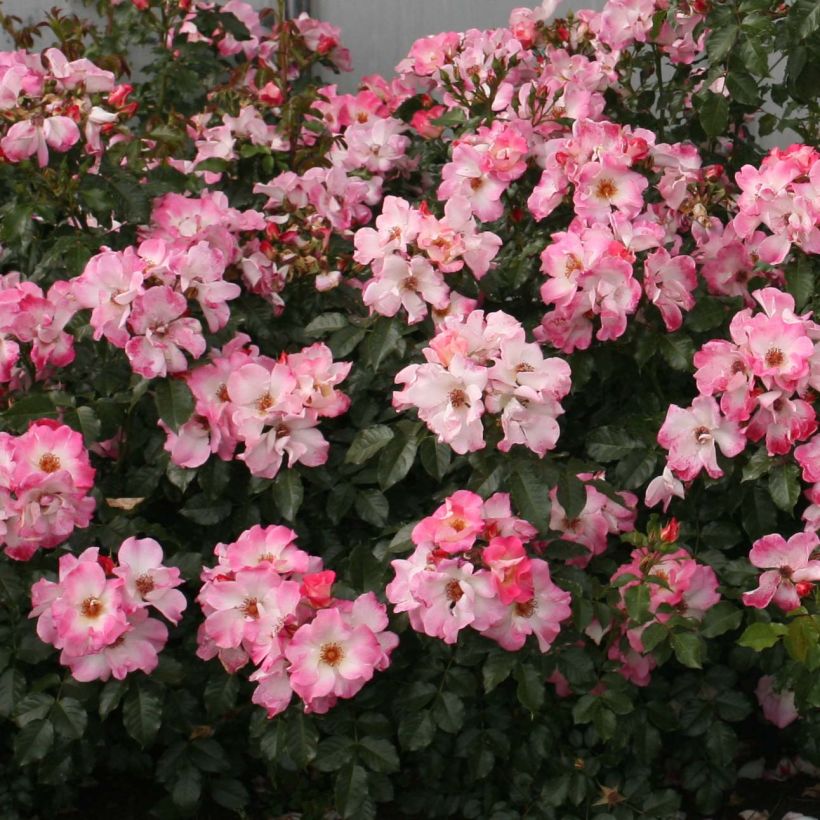

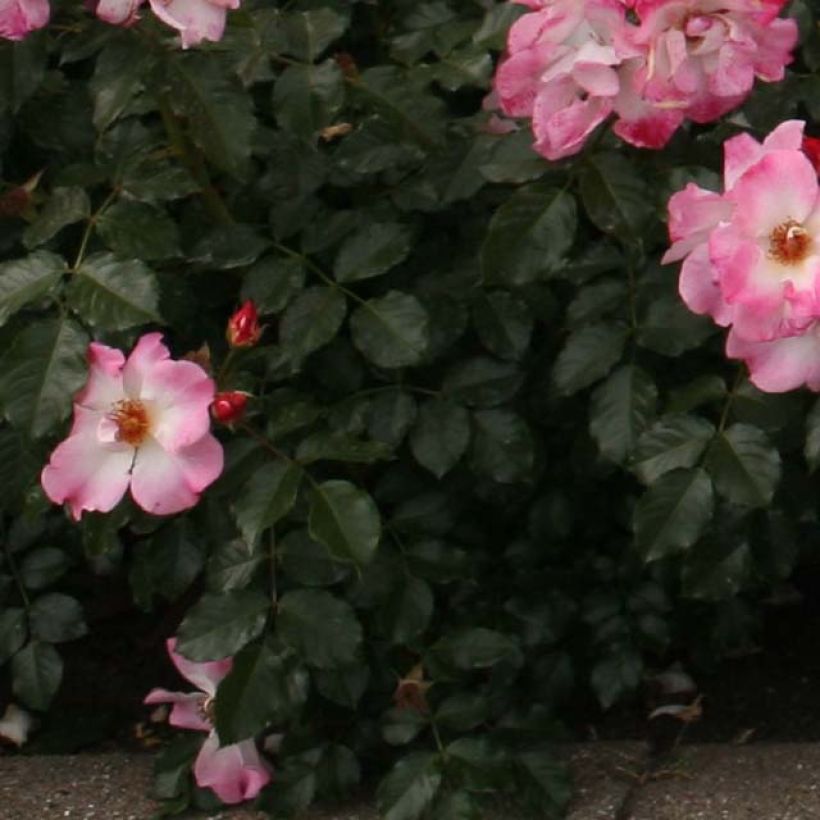

Plant habit
Flowering
Foliage
Botanical data
Rosa
x polyantha
Dolomiti® Korrahibe
Rosaceae
ground cover rose
Cultivar or hybrid
Rosa canina Laxa (Wrapped bare root)
Other Ground Cover and Dwarf Roses
Planting and care
Roses prefer a sunny location (at least 4 to 5 hours of sun per day) sheltered from the scorching rays of midday and strong winds. Roses like loose, permeable soil rich in humus. They prefer slightly acidic soil but will adapt to any garden as long as the soil is well-worked and sufficiently rich. To plant your rose in a pot, work the soil to a depth of 25 cm (10in), break the soil up well and place a base fertiliser such as bonemeal at the bottom of the planting hole. Remove your plant from its pot and position it with the top of the root ball under 3 cm (1in) of soil. Fill in and water generously to eliminate air pockets. Water regularly for a few weeks to facilitate root growth. Provide your rose with special rose fertiliser to stimulate flowering.
Roses are often stained or unsightly at the end of summer, but this is not a problem for their development. These spots are not harmful to the rose; it is a natural phenomenon.
Planting period
Intended location
Care
- , onOrder confirmed
Reply from on Promesse de fleurs
Roses by purpose
Haven't found what you were looking for?
Hardiness is the lowest winter temperature a plant can endure without suffering serious damage or even dying. However, hardiness is affected by location (a sheltered area, such as a patio), protection (winter cover) and soil type (hardiness is improved by well-drained soil).

Photo Sharing Terms & Conditions
In order to encourage gardeners to interact and share their experiences, Promesse de fleurs offers various media enabling content to be uploaded onto its Site - in particular via the ‘Photo sharing’ module.
The User agrees to refrain from:
- Posting any content that is illegal, prejudicial, insulting, racist, inciteful to hatred, revisionist, contrary to public decency, that infringes on privacy or on the privacy rights of third parties, in particular the publicity rights of persons and goods, intellectual property rights, or the right to privacy.
- Submitting content on behalf of a third party;
- Impersonate the identity of a third party and/or publish any personal information about a third party;
In general, the User undertakes to refrain from any unethical behaviour.
All Content (in particular text, comments, files, images, photos, videos, creative works, etc.), which may be subject to property or intellectual property rights, image or other private rights, shall remain the property of the User, subject to the limited rights granted by the terms of the licence granted by Promesse de fleurs as stated below. Users are at liberty to publish or not to publish such Content on the Site, notably via the ‘Photo Sharing’ facility, and accept that this Content shall be made public and freely accessible, notably on the Internet.
Users further acknowledge, undertake to have ,and guarantee that they hold all necessary rights and permissions to publish such material on the Site, in particular with regard to the legislation in force pertaining to any privacy, property, intellectual property, image, or contractual rights, or rights of any other nature. By publishing such Content on the Site, Users acknowledge accepting full liability as publishers of the Content within the meaning of the law, and grant Promesse de fleurs, free of charge, an inclusive, worldwide licence for the said Content for the entire duration of its publication, including all reproduction, representation, up/downloading, displaying, performing, transmission, and storage rights.
Users also grant permission for their name to be linked to the Content and accept that this link may not always be made available.
By engaging in posting material, Users consent to their Content becoming automatically accessible on the Internet, in particular on other sites and/or blogs and/or web pages of the Promesse de fleurs site, including in particular social pages and the Promesse de fleurs catalogue.
Users may secure the removal of entrusted content free of charge by issuing a simple request via our contact form.
The flowering period indicated on our website applies to countries and regions located in USDA zone 8 (France, the United Kingdom, Ireland, the Netherlands, etc.)
It will vary according to where you live:
- In zones 9 to 10 (Italy, Spain, Greece, etc.), flowering will occur about 2 to 4 weeks earlier.
- In zones 6 to 7 (Germany, Poland, Slovenia, and lower mountainous regions), flowering will be delayed by 2 to 3 weeks.
- In zone 5 (Central Europe, Scandinavia), blooming will be delayed by 3 to 5 weeks.
In temperate climates, pruning of spring-flowering shrubs (forsythia, spireas, etc.) should be done just after flowering.
Pruning of summer-flowering shrubs (Indian Lilac, Perovskia, etc.) can be done in winter or spring.
In cold regions as well as with frost-sensitive plants, avoid pruning too early when severe frosts may still occur.
The planting period indicated on our website applies to countries and regions located in USDA zone 8 (France, United Kingdom, Ireland, Netherlands).
It will vary according to where you live:
- In Mediterranean zones (Marseille, Madrid, Milan, etc.), autumn and winter are the best planting periods.
- In continental zones (Strasbourg, Munich, Vienna, etc.), delay planting by 2 to 3 weeks in spring and bring it forward by 2 to 4 weeks in autumn.
- In mountainous regions (the Alps, Pyrenees, Carpathians, etc.), it is best to plant in late spring (May-June) or late summer (August-September).
The harvesting period indicated on our website applies to countries and regions in USDA zone 8 (France, England, Ireland, the Netherlands).
In colder areas (Scandinavia, Poland, Austria...) fruit and vegetable harvests are likely to be delayed by 3-4 weeks.
In warmer areas (Italy, Spain, Greece, etc.), harvesting will probably take place earlier, depending on weather conditions.
The sowing periods indicated on our website apply to countries and regions within USDA Zone 8 (France, UK, Ireland, Netherlands).
In colder areas (Scandinavia, Poland, Austria...), delay any outdoor sowing by 3-4 weeks, or sow under glass.
In warmer climes (Italy, Spain, Greece, etc.), bring outdoor sowing forward by a few weeks.
